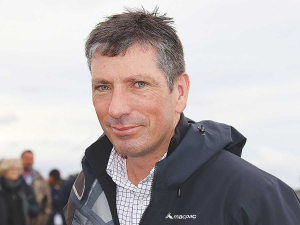US, EU and UK drive NZ red meat export boom to $827m
According to analysis by the Meat Industry Association (MIA), New Zealand red meat exports reached $827 million in October, a 27% increase on the same period last year.
 B+LNZ chief executive Sam McIvor says these barriers are real concerns that need to be prioritised as part of New Zealand’s trade strategy.
B+LNZ chief executive Sam McIvor says these barriers are real concerns that need to be prioritised as part of New Zealand’s trade strategy.
New Zealand must evolve its trade strategy to capture more value from existing markets if the country is to increase exports.
That’s according to the latest edition of the biennial Barriers to International Trade report, published by the Meat Industry Association of New Zealand (MIA) and Beef + Lamb New Zealand (B+LNZ), which shows that New Zealand’s free trade agreements have reduced the level of red meat tariffs from $366 million in 2010 to $193m in 2022.
Red meat farmers and producers generated almost $12b in export earnings in 2022. New Zealand’s second biggest goods exporter, the industry employs 92,000 people, or 5% of total national employment.
However, between 2021 and 2022 there was a 22% uptick in red meat tariffs due to New Zealand exporting more products to markets with high tariff rates.
MIA chief executive Sirma Karapeeva says that for decades New Zealand had been successful in securing FTAs in lucrative markets in Asia and further afield.
“But the world is changing and the international landscape is now marked by greater protectionism, geopolitical tensions and economic volatility in the wake of the pandemic,” she says.
“We need to ensure that our trade strategy is responsive to this changing environment and a central part of this is ensuring that we get the maximum value out of the FTAs we already have in place.”
Karapeeva adds that this work must also include a strong focus on non-tariff measures that apply beyond the border. The report shows that NZ’s red meat sector faces 117% more nontariff measures than the world average, adding $1.5 billion in yearly costs.
“Some of these nontariff measures work in our favour because of the quality of our products and systems such as food safety standards. But other technical barriers to trade impose $370 million in administrative costs that provide little consumer benefit.”
 |
|---|
|
Meat Industry Association chief executive Sirma Karapeeva says the international landscape is now marked by greater protectionism. |
B+LNZ chief executive Sam McIvor says these barriers are real concerns that need to be prioritised as part of New Zealand’s trade strategy.
“With on-farm inflation almost double general CPI (consumer price index) and average farm profits in the sheep and beef sector forecast to fall 30% this year, tackling tariff and non-tariff barriers requires government- to-government engagement,” he explains.
“That is why we are calling for it to top the trade priority list… the development of robust, science-based standards is a key strategy to tackling barriers to trade.”
McIvor adds that sustainability requirements are increasingly being placed on imports into key markets. He says while New Zealand’s farming practices are not the focus of these new regulations, beef and sheepmeat risks being unduly impacted by these barriers to trade. McIvor says ensuring that New Zealand farmers’ sustainability credentials are well understood by government officials in key markets is critical.
“New Zealand has invested significantly in establishing a framework of trade agreements and seen great success in tariff reductions. But as the economy starts facing headwinds, it is time to fully leverage all aspects of these agreements.”
One person intimately involved in the new legislation to replace the Resource Management Act (RMA) is the outgoing chief executive of the Ministry for the Environment, James Palmer, who's also worked in local government.
Horticulture New Zealand (HortNZ) says a new report projects strong export growth for New Zealand's horticulture sector highlights the industry's increasing contribution to the national economy.
Fonterra shareholders say they will be keeping an eye on their co-operative's performance after the sale of its consumer businesses.
T&G Global says its 2025 New Zealand apple season has delivered higher returns for growers, reflecting strong global consumer demand and pricing across its Envy and Jazz apple brands.
New Zealand's primary sector is set to reach a record $62 billion in food and fibre exports next year.
A new levying body, currently with the working title of NZWool, has been proposed to secure the future of New Zealand's strong wool sector.

OPINION: Federated Farmers has launched a new campaign, swapping ‘The Twelve Days of Christmas’ for ‘The Twelve Pests of Christmas’ to…
OPINION: It used to be that the National Fieldays attracted brickbats for being officious clipboard carriers, while the regional, farmer-run field…